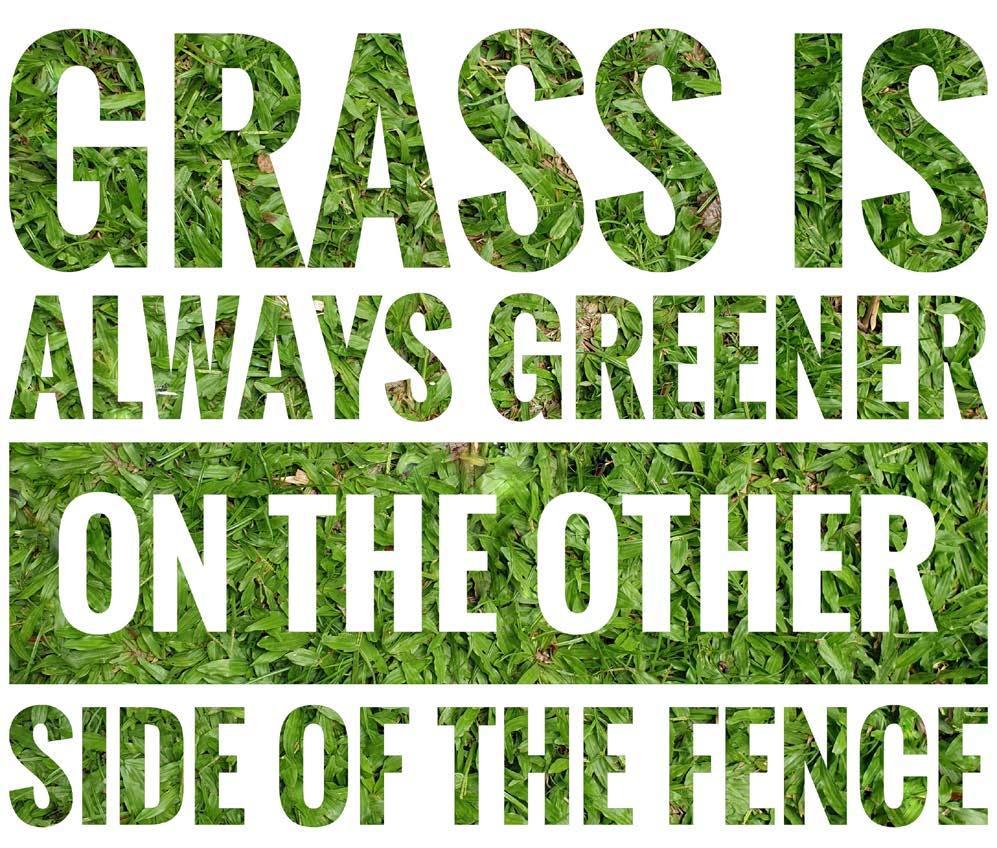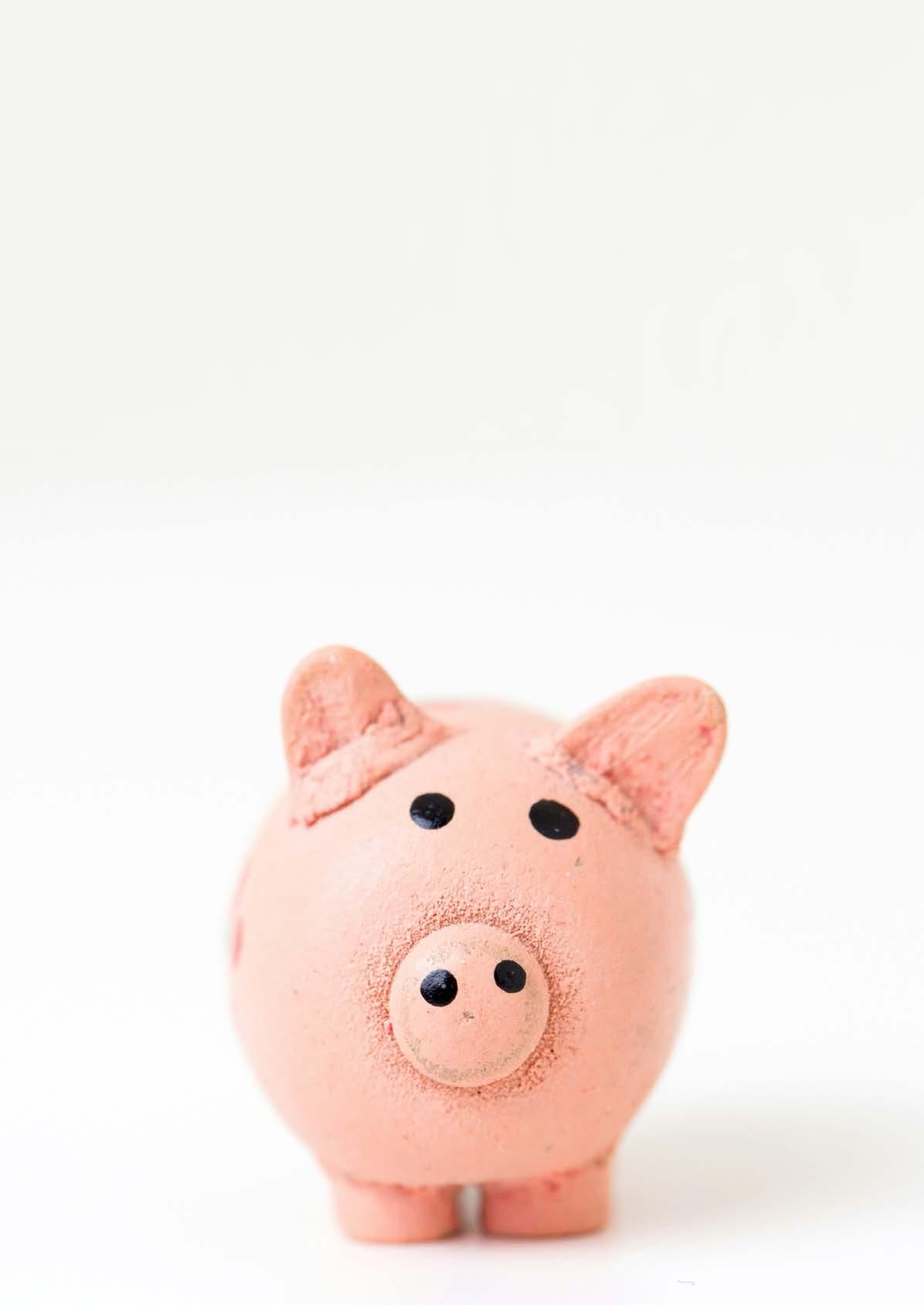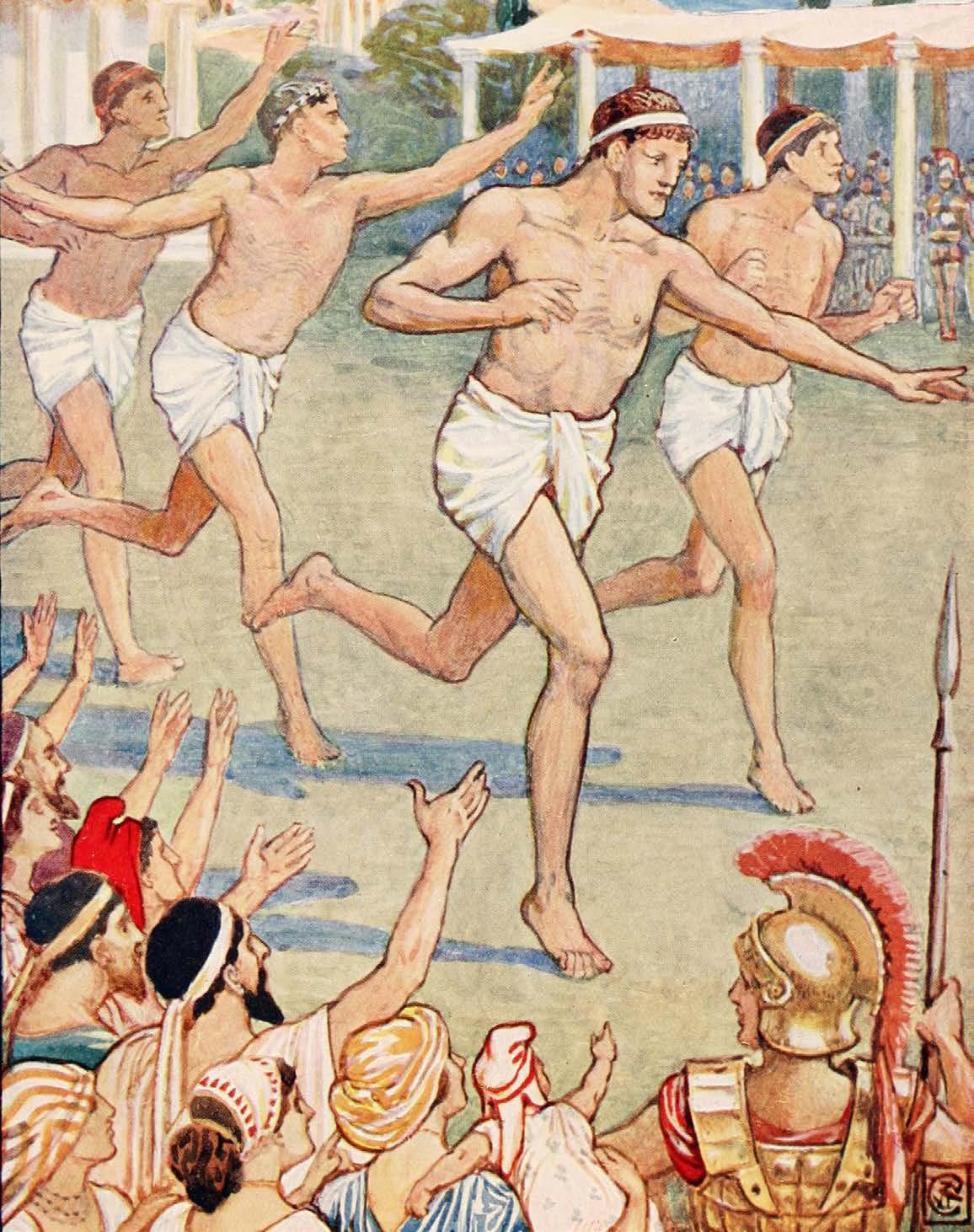Unsilenced Exploring the Boundaries of Free Speech
Drowning in Plastic
Dear Reader,

Dear Reader,
Thankyou for picking up the latest edition of The Crown.As editors,it is our pleasure to present to you a diverse array of articles,features,and insights that encapsulate the vibrant spirit of our school community From thought-provoking opinion pieces on ‘Fast Food’ and Free Speech’ to an ‘Interview with Mr Redfern’,this edition is a testament to the talent,dedication,and passion of our students.This term’s edition of The Crown expresses a wide range of interests which our journalists have individually chosen with everything from ‘The effect of Classical Civilisation on our Modern World expertly explaining how Classics and theAncient World has shaped the world we live in today to ‘Karen - the demonization of middle-aged women’ exploring the term Karen’ and how misogynistic it really is.
The Crown is entirely edited and written by a team of senior school pupils,ranging from Year 7 all the way up to Year 12.We are very proud of our contributing pupils who write freely about their most enjoyed topics and we hope you enjoy this edition of The Crown!
We encourage you to immerse yourselves in the pages ahead. Sit down,relax and enjoy the writing!
Iman and Theo - Editors
As ever, the magazine would not be possible without a lot of help from a number of contributors. Many thanks to the following students for their contributions:
Editing Team
Iman Mirza (Year 12)
Theodore Wolstenholme (Year 12)
Isabel Lewis (Year 12)
Louis Lowe (Year 10)
List of Contributors
Amy Abrahams (Year 7)
Naomi Daudu (Year 7)
Chloe Esmaeili (Year 7)
Eluka Fleming (Year 7)
Grace Killick (Year 7)
Haydar Khakoo (Year 7)
Eashan Kumar (Year 7)
Lana Patel (Year 7)
Alina Shah (Year 7)
Simran Shah (Year 7)
Arjun Singh (Year 7)
Eshaal Zia (Year 7)
Shaheer Shiraz (Year 8)
Max Layton (Year 8)
Sam Wolstenholme (Year 9)
Louis Lowe (Year 10)
Heart Joshua (Year 11)
Monisola Olaide-Agboola (Year 11)
Ogo Kingsley-Anyanwu (Year 11)
Daniella Godwin-Etim (Year 11)
Zara Urus (Year 11)
Iman Mirza (Year 12)
Theodore Wolstenholme (Year 12)
Isabel Lewis (Year 12)
Unveiling our Heritage: An intensive dive Page 4 into finding out our cultural identity
Godzilla: How the monster arose Page 6
The Art of Being Satisfied: ‘The grass is always Page 8 greener on the other side of the fence’
Is it the End of the Road for Formula One? Page 10
Do aliens exist? Exploring the Page 11 extra-terrestrial enigma
Mental health conditions; the stigma Page 12
Money Matters: Unravelling the Page 14 Currency of Happiness Page 15
‘Karen’ - The Demonization of Middle-Aged Women
Hidden Disabilities: Dyslexia, ADHD and Page 16
Epilepsy: Making the invisible visible
‘Pretty Perfect’ Page 18
Drowning in Plastic - It’s Time to Turn the Tide Page 19
Music is for life, not just for Christmas Page 20
Chatty Cats: How to talk to your feline friends Page 22
The Impact of Classical Civilization on Page 24 the modern world’
Online Shopping: Is it really more convenient? Page 26
Unlocking Pi: Exploring Maths’ Endless Enigma Page 27
Unsilenced: Exploring the Boundaries of Page 28 Free Speech
Fast Food - The Plague of Our Generation Page 30




In our world, we live in a state of silence that prevents us from discussing our cultural identity, making many people afraid to study or freely declare their origin. As black teenagers, we frequently find ourselves navigating the complex web of our racial and cultural identities. We are aware of the stereotypes and the discomfort that people feel when we discuss our racial experiences, but we are not ashamed. In this article, we will deconstruct and shed light on the various reasons why people are scared to share their origins. We believe that by doing so, we can shine a light on the thing that stops true cultural independence.
We are always striving to manage the complex nature of our identities. Our culture and ancestry build a big part of our identity, influencing who we choose to be or not to be. In today’s diverse world, we are continuously surrounded by numerous cultures and traditions, and the lines that separate these cultures are becoming increasingly blurred as a result of apps and businesses - globalisation. Engaging with people from diverse cultures builds empathy and understanding for them as individuals, as well as members of their society. There are several ways to engage with a culture, including literature, culinary arts, music, and even architecture. We can obtain a global perspective and realise the significance of all cultural traditions. This sensation of relatability cannot be felt in any other way. Rather than seeing diversity and culture as sources of conflict, cultural appreciation allows us to see them as a force that unites us and fosters growth and fulfilment.
This makes the individuals who belong to cultural minorities scared to share their backgrounds as they feel that it might be reduced to a trend resulting in them never being given the recognition for what has been in their community for years.
Heart Joshua, Daniella Godwin- Etim, Ogo Kingsley-Anyanwu, Monisola OlaideAgboola
Heart Joshua, Daniella GodwinEtim, Ogo Kingsley
Year 11
Year 11
People may not be drawn to share about their cultural background due to the fact that it may be ridiculed or not accepted. It takes courage for a person to share their life and identity and when someone makes a mockery of that crucial part of them it damages the pride they had in their community and shrinks them back into a hole of fear. People who don’t appreciate culture don’t understand how it feels to have a section of you ripped out due to one comment they deemed unharmful. However, it is harmful to the victim’s self-esteem and therefore they no longer feel comfortable or confident freely declaring their origin. A girl told us that when she was in primary school she had a cultural day at her school where they were asked to bring food from their culture. She said she felt excited to share a part of herself with the rest of her classmates and a day she thought would bring insight for others turned into a day filled with pain. When she came in the next morning with her favourite food, another student came up to her and loudly proclaimed that the dish looked disgusting and inedible. She told us she had never once questioned whether to share her identity but that morning where she felt embarrassed and rejected diminished her confidence, to share about her culture, so much that she began to think twice before talking about her background. One comment can easily formulate terror in one’s mind about the topic of culture and steer them away from it completely.
Cultural appropriation, according to the Oxford Dictionary, is the unacknowledged or inappropriate adoption of the customs, practices, ideas, and so on of one people or society by members of another, usually more dominant people or society. Cultural appropriation is unacceptable because it minimises the uniqueness of marginalised cultures. When some components of a culture are chosen and spread over the world for business and trends, the culture from which these ideas originate is shattered. It not only weakens their identity but also undermines the meaning behind those activities.
A recent example of this is the lip liner ‘trend’, which was widespread among women of Hispanic and African origin for years before. Hailey Bieber wowed the internet in 2023 with a deeper lip liner and a bright lip gloss. The trend’s name changed from time to time; one day it was termed the ‘chocolate lips’ trend, the next it was labelled the ‘Hailey lips’ trend, but overall it was an art that had been done for years in a culture of its own. When the truth was revealed, no one was willing to admit it. Hailey may not have been aware that she was engaging in cultural appropriation, but her lack of appreciation for the community that had expressed worry about her failure to give them the recognition they deserve told us all we needed to know about her views on African and Hispanic culture.
As a teen, it is very evident how people, especially teenagers, have been indoctrinated to accept social trends practically without question. The concerning thing about these trends is they often turn into cultural appropriation, in which a crucial element of the culture is torn apart for fame without the significance being acknowledged. Afrobeats is a clear example of this. A genre of music that is deeply ingrained in African culture but is now watered down and simplified for mass consumption by apps such as Tiktok. Although, for Africans, it is encouraging to see Afrobeats become well-known worldwide, the way it is used on social media as just another trend may lessen its cultural significance and reinforce negative stereotypes. Afrobeats has now been reduced to a catchy beat or background music for viral videos, rather than being appreciated for the depth and complexity of the genre and the culture it represents. This is cultural exploitation and it silences our voice, the voice of people within the African diaspora, and destroys the originality and artistry of Afrobeats. As teens, we need to be mindful of the diversity within the apps we use on a daily basis and embrace it whilst learning the significance behind it.
To conclude this lengthy but hopefully beneficial article, we would like to encourage and urge people to learn more about their culture, as doing so not only unlocks a deeper, more intriguing aspect of themselves, but also spreads and makes everyone else around them aware of the beauty that exists within one’s culture.

Max Layton & Shaheer Shiraz
Year 8
the monster arose
It’s easy to pass off the Godzilla franchise as simple monster movie fun, and while many movies in the franchise certainly are, you’ll quickly find that most of the good ones aren’t. Godzilla has been everything, from his horrifying origins as a metaphor of the fears of nuclear destruction, to a campy superhero, teaming up with a size-changing robot to help him save earth by drop-kicking a giant cockroach. How did Godzilla go from this, to the pop culture powerhouse we know him as today? How did the beast come to be?
The first film, directed by Ishirō Honda, released on November 3rd, 1954 in Japan was simply titled “Gojira”. The film itself is very dark, in both tone and lighting, as it was produced as a reflection of post-war Japan. Godzilla himself in this movie is not a goofy, titan-crushing hero, but an evil destroyer and a representation of the very nuclear bombs dropped on Japan in WWII. It takes itself very seriously with many haunting scenes that leave the film more akin to a horror movie than a monster movie.
The movie opens on a Japanese boat, named “Eiko-Maru”, which is destroyed near the fictional Odo Island. A second boat, the “Bingo-Maru” is sent to investigate and quickly meets the same fate. The choice of opening on boats being destroyed could seem odd, but they have good reason for being there. The destruction of these boats was inspired by the similar destruction of the Japanese fishing boat “Daigo Fukuryū Maru (Lucky Dragon No.5)” which was caught in the crossfire of the American Castle Bravo hydrogen bomb nuclear test at Bikini Atoll. The boat itself survived, and is still on display in a museum today, but the crew didn’t have the same luck. Every single crew member on board at the time died a painful death from radiation poisoning.
Later in the movie, a character named Dr. Serizawa reveals that he has accidentally created a weapon known as the Oxygen Destroyer, that dissolves any creature in water to bone. As the film is set in 1954, right after the Hiroshima and Nagasaki bombings, he talks about it with a heavy heart, scared about its potential for warfare.
The film even refuses to end on a fully positive note! Godzilla is killed using the Oxygen Destroyer by Dr Serizawa himself. Serizawa goes underwater with a diving suit and the weapon in tow, but then cuts his own oxygen supply and takes the secrets of the Oxygen Destroyer to his grave, ensuring that nobody will ever replicate it. His final words are directed at the main character, wishing her to be happy. The film ends on a monologue, with a character speaking about how if humanity continues to meddle with nuclear power, then another Godzilla could come and ravage them again. A metaphorical warning to the world about the dangers of nuclear power.
Now almost reaching its 70-year lifespan, Godzilla is the longest running film franchise starting from 1954 till today! It all started because the creator, Toho, was inspired to create the Godzilla film after the commercial success of other giant monster movies such as “King Kong” (1933) and “The Beast from 20,000 Fathoms” (1953) Godzilla has a total of 37 films and 33 of those films have been Japanese and distributed by Toho Co. The remaining 4 were American, 1 being produced by TriStar Pictures and the final 3 produced by Legendary Pictures.
“Godzilla is the longest running film franchise starting from 1954 till today!
In 2004, to celebrate Godzilla’s 50th birthday, Godzilla himself received a star on the Hollywood Walk of Fame. This made Godzilla one of the few fictional characters, and the only nonAmerican character, to receive a star of their own. The movie’s composer, Akira Ifukube, created Godzilla’s roar without any animal sounds, but by rubbing a glove soaked in pine tar on a double bass guitar string. The 1954 film cost a total of $900,000 ($8.5 million in today’s current climate) which made it the most expensive Japanese film at the time. The Godzilla suit used in the original film was built using ready mixed concrete and rubber, weighing up to 100kg. It was so hot inside the suit that the actor, Haruo Nakajima, couldn’t spend over 2 minutes inside of it without risking his health. They literally had to clean out the inside of the suit every time he used it due to the massive build-up of sweat!

Proverbs will always be a part of our life, now and forever, but the one above, ‘the grass is always greener on the other side of the fence’, has always resonated with us. This saying, in its most basic form, captures the simple human desire for a sense of completion. The sense of constantly believing that where someone else is, is ultimately better than where you are. We took it upon ourselves to deconstruct the layers that are woven into this fairly simple quote.

deep dive into this quotation may take hours, if not days, as it captures all elements of our life, from societal standards to personal relationships. The psychology that supports the human tendency to view other people’s lives as more valuable than our own is one on which we, as teenagers, are not equipped to provide expert assistance, but we can provide personal guidance. All teenagers may acknowledge that at some point in their lives, they glanced at someone else’s life and expressed the desire that it were their own. That desire to enter other lives and, like a virus, take control, is one that we often fall into.
It’s amazing how much social media encourages this negative idea. For instance, you see someone who is in their idea of a perfect relationship and is very open on the internet about it and suddenly, you start to doubt your happiness, even though you know deep down that where you are isn’t horrible at all. Additionally, there is always pressure in social settings to network, find someone better to talk to and constantly look for ways to improve connections and have conversations. Then there is what we call ‘the iPhone trend’, where every new model is a constant reminder that you are not cool or modern enough, that you are being left in the past and therefore will be degraded and mocked solely based on materialistic items.
These goals might inspire us to take on new challenges and heights but they can also have negative effects on our mental and physical health. For us teens, it is this selfish obsession with grades that can become overwhelming and result in late night study sessions and the constant sacrifice of our sleep and time. In a similar way, people in professional environments experience long working hours, heavy stress and burnout due to their unwavering aim for a development in their job. It is critical to understand that aiming too high can result in feelings of inadequacy and discontent as we never feel like we’ve accomplished enough or reached our full potential.
It is crucial for us teenagers to pause and consider why we always want more. We believe that determination and ambition are extremely commendable qualities but we also believe that there is a thin line between having healthy aspirations and having insatiable hunger for things that will have no meaning in the next 10 years.
Year 11
As a society, we have been wired to think that life isn’t fulfilling if we are not always pushing ourselves to do better. However, the truth is: juggling everything is exhausting, especially for teens like us. It is unhealthy to compare yourself to people all the time. It has detrimental impacts on our relationships, our self-esteem and even our academic success. The scariest part of it is that it is an extremely difficult cycle to escape, a cycle of dissatisfaction and pain and because we are teenagers we are more likely to fall into this as we are still trying to find ourselves and our identity. We need to learn to escape this and discover true fulfilment and value our own journeys.
It is evident that there is unquestionable pressure in both academic and professional contexts to aim for more, whether that be gaining a new managerial position or pursuing higher grades or education.

Using our vice, social media, as an example, we can say that people flaunting a recent purchase or achievement makes it simple for us to get sucked into the storm. However, beneath the perfectly coordinated Instagram page lies a more profound reality: biting off more than you can chew - striving for too much - can cause worry, anxiety and a feeling of inferiority. Sometimes we need to let go of this urge for more and learn to be content with what we already have and live in the now. Rather than constantly pursuing the latest and greatest thing, we should concentrate on forming deep relationships, nurturing our skills and hobbies and developing gratitude to the people who have supported us along the way - all of which will mean the most in the next few years. Finding a balance between pursuing personal achievement and acknowledging the abundance around us is more important than giving our time to worthless objectives.
To conclude this article, we want to urge you, teenagers and adults reading this, to disconnect from the constant fear of being left behind and the feeling of never being good enough and connect to the present, to what is happening and in doing this, we want to leave you with a lengthy but extremely impactful quote from author, Robert Fulghum that says, ‘The grass is not, in fact, always greener on the other side of the fence. No, not at all. Fences have nothing to do with it. The grass is greenest where it is watered. When crossing over fences, carry water with you and tend the grass wherever you may be’.
Formula One has been around for a rather long time since the first race in Silverstone on 13th May 1950. This first race took place in England. Over time, the sport has developed from only being recognised as a luxury, to now being enjoyed by people from many different backgrounds. Formula One has been known for its dangerous highspeed racing, new tracks and exotic race tracks like Azerbaijan, Singapore, Sao Paulo and Las Vegas.
Why has Formula One gained so much media attention?
Formula One has earned a reputation from the number of dangerous incidents that have occurred over the last few years. However, this has also led to a number of positive reforms. For instance, the presence of multiple fire hazards posed a danger when refuelling, leading to refuelling being banned in 2010. Additionally, the open roof was a problem because of the highspeed cars. This made it more likely for a car to tip over, until 2018, with the introduction of the Halo (a curved bar which sits above the driver’s head) which saved countless people.
Another reason why Formula One has gained such fame is linked to the number of new tracks around the world for new fans to see. For example, the new Las Vegas track opened last year and the Miami track opened in 2022, both tracks being accessible for Americans allowing for the sport to maintain worldwide fame. Moreover, the plans for the future say the sport is going to have net zero emissions by 2030, and that there is going to be an 11th team on the grid. Meanwhile, the 7-time world champion, Lewis Hamilton, left Mercedes to Ferrari after 13 years. This constant stream of information leaves fans hooked.
is Formula One losing popularity?
Formula One’s popularity is currently in a decline. This is because of how some drivers are dominating the grid leaving little to no competition. A key example of this is Max Verstappen. He has won 3 world championships consecutively since the 2021 season against Lewis Hamilton. Formula One is also losing popularity due to the negative effect it has on the environment. Despite plans for the sport to have a net zero car by 2030, some believe it is not going to be a reality. Lastly, the cars are getting slower. This stems from the heavier cars alongside smaller v6 engines, introduced by new regulations. Due to this, the excitement usually built by the races is slowly in decline.
Arguably, Formula One does have a bright future because of multiple promises made by the Fédération Internationale de l’Automobile, the governing body behind Formula One, saying that they will try to limit the fuel and increase the horsepower. They stated they will do this by upgrading their hybrid turbo whilst also attempting to achieve net zero by 2030. In my opinion, the FIA has made a lot of big promises to the Formula One community. While it isn’t impossible for this to be a reality, it is too early to know what is going to happen.
But as a whole, I believe Formula One does have a bright future ahead.

Do aliens exist? A question that has been raging like a storm through people’s minds for hundreds of years. There are many different arguments for both sides of the debate which has ultimately left us far more confused, but fear not as we are here to settle the debate once and for all.
Reasons to consider alien existence:
One compelling case rests upon the celestial body Kepler 452-b. Positioned within a habitable zone, showing Earth-like dimensions and temperatures for water, Kepler 452-b stands as a beacon of potential extra-terrestrial life. With an age surpassing that of our planet, it offers fertile ground for evolutionary processes to unfold, hinting at the possibility of life beyond our terrestrial confines.
Moreover, the vast expanse of undiscovered planets within our universe beckons exploration. With merely a fraction of planets surveyed amidst the extreme expanse of a sextillion, the odds tip in favour of undiscovered life forms lurking amidst the cosmic abyss. The ongoing discoveries of exoplanets orbiting distant stars accentuate the prospect of encountering extra-terrestrial societies.
Discussions from the scientific community reverberate with agreement, suggesting that the universe likely teems with life. The sheer quantity of stars and galaxies, along with the emergence of life in external environments, builds the argument for the existence of alien lifeforms.
Reasons to question the existence of aliens:
Counter arguments, however, interject with cautionary rumours of scepticism. Despite vast investigations within our Milky Way galaxy, substantial evidence of extra-terrestrial life remains unreachable. The lack of concrete proof from NASA’s ventures leaves lots of doubt.
Furthermore, the absence of publicised encounters with UFOs or aliens’ sparks suspicions. If such wonders were real, the temptation of fame and fortune would likely make individuals step forward to be recognised as ‘the one who discovered aliens. Yet, the noticeable silence within our midst prompts scepticism on the honesty of alien encounters.
Intriguingly, the search for liveable planets close to Earth lacks evidence of alien presence. Even within the exploration of promising candidates like Kepler, the absence of definitive signs of extra-terrestrial civilisations emphasises the complexities of this topic.
After all of this information it can be strongly argued that aliens do, in fact, exist as surely with there being trillions of galaxies yet so little explored, there must be some form of life outside of our planet. The universe is so unpredictable and our knowledge is expanding by the day. Truly we should be asking; where are the aliens? Rather than, do they exist?
Haydar Khakoo & Eashan Kumarare countless people around the world who have mental health issues and just as many who are unkind to those affected. Mental health conditions come in many forms such as anxiety, depression, eating disorders and many others. The sad thing is that an estimated 31.9% of people under 18 have anxiety (according to the NHS). Too many people with mental illnesses will not confide in anyone, and many people haven’t even been diagnosed. Similarly, many people disregard how important mental health is, and how severe it can be. A large number of people suffer from anxiety or depression and have been told ‘you’re being overdramatic’ or to ‘stop attention seeking’, when in reality, no one knows how hard it can really be. Despite this, there are many ways to calm yourself down or to handle stress. When I’m frustrated, I use a keychain on my fob that has special value to me, and fiddle with it when I feel like I need it. This is a great way to handle your stress. I find another way is to use your hobbies to distract you. I find this is an effective way to calm myself down because it helps me to settle my anxiety.
A myriad of people are unaware that mental health conditions can actually lead to physical health problems as well. For example, if someone was being bullied because of their weight, this could contribute to pre-existing insecurities leading to them putting themselves on a strict diet. This could have even more serious consequences such as anorexia or bulimia, paving the way for further physical health problems. Furthermore, if someone feels insecure, they could turn to self-harm as a coping mechanism. Mental health problems often manifest themselves as physical health problems. Self-harm can result in permanent nerve damage and stress could lead to debilitating headaches or even migraines. Mental health cannot only be damaging to your own physical and mental state, but it can also have an adverse impact on others. For example, if you are carrying a heavy burden, you may not be as considerate of others feelings, which can in turn, affect friendships. Moreover, if you were angry about something, and you didn’t tell anyone, you can end up lashing out at someone which can make people dislike you. Trust me, I’ve done it many times!
Whilst it is hard to do, there are ways that you can help yourself to manage your mental health. One thing you can do is book regular therapy appointments with your local therapist to check in with yourself, as you might have these conditions without even realising (and thus not being diagnosed which can be one of the worst things for your mental health.) Another thing you can do is to get a good night’s sleep, and there are many ways to do this, such as turning off screens early, or taking a hot shower. Another thing you can do to help manage your sleep is by using a sleep tracker; you can either do this on paper, or download an app on your phone to do it for you . Many smart watches also offer this ability. You can also exercise, (not within 2 hours of bed). The best thing you can do though, is to train your body clock; make sure you sleep at the same time every day, and wake up at the same time (including weekends). Once you do this, your body will naturally adjust and you might even be able to wake up without an alarm!
estimated
31.9% of
have anxiety
In conclusion, mental health is just as important as your physical health, and many people forget about it sometimes. Make sure you use these tips if you find that you may have mental health conditions, or talk to a therapist or speak to the wellbeing team in school or maybe even your parents.

Money holds a pivotal role in our lives, capable of creating both joy and despair. Whilst money can make people corrupt and society can quickly become unfair, it is still needed to uphold the stability in our world. Considering the question as to whether money buys happiness, can be subjective. Many people believe that money is not as important as it is said to be, but that is not necessarily the case.
Primarily, it is crucial to have a roof over your head to keep you warm and prevent you from getting sick. Money is needed in everyday life; it provides all the necessities you take for granted like tables, chairs, beds, cutlery, clothes, bathrooms etc. Consider life without the means to afford a home or basic furnishings. Such deprivation paints an image of pure misery.
Moreover, money is necessary to buy food. In order to eat and stay alive, you have to pay. In a world where food comes with a price tag, financial resources become essential for survival. The average UK household spends £4,124 on supermarket food and £1,220 on restaurants and bars. With enough money, you can buy almost anything you want. Charts show that over 50% of people worldwide believe they need £10 million to live the perfect life. As you can see from that statistic, a significant portion of people believe that money is necessary for an ideal life, suggesting a correlation between wealth and happiness.
Inflation is a good example of why money is so important. Inflation is when the prices of goods, services and taxes go up in price. This happens because the government needs the money to continue growing the economy which then gives money back to you. This provides you with a place to work and earn the money to spend again which then allows the government to retrieve it. This whole construct is a vicious cycle. Can you picture how terrible the streets would be if there was no money to clean them or keep them intact? Or if there was no money to pay the police, the fire brigade or the doctors. If the government couldn’t pay them, who would you call in an emergency? Without money, the funding towards emergency services would collapse leaving you stranded in the case of an emergency. The idea that when you are in danger there is always someone to call is taken for granted in this society.
On the whole, money runs the world. Everyone needs it and everyone wants it. It is just that good and important in our lives. Not only does it cover our nutrition and keep roofs over our heads but it also allows you to buy what you want, not only what’s needed, making it even better. Money makes the world go round and puts a smile on your face.
In recent years, the term ‘Karen’ has surged in popularity as a label for a certain type of middle-aged woman, typically portrayed as entitled, demanding, and quick to complain. This trend has sparked conversations about the implications and consequences of using such a label, raising questions about the fairness and accuracy of the stereotype.
The ‘Karen’ stereotype typically portrays middle-aged women as entitled, demanding and prone to making unreasonable complaints or demands in public settings. Often depicted as confrontational, overly assertive and intolerant, ‘Karens’ are expressed as the bane of customer service workers and retail employees everywhere. However, underneath the surface of this seemingly harmless meme lies a troubling pattern of gendered and ageist assumptions. The term ‘Karen’ is believed to have originated from internet culture, particularly on social media platforms and online forums. Originally intended to describe a person displaying entitled or demanding behaviour, the label quickly evolved into a stereotype associated with this specific demographic: middle-aged women. Memes,videos, and anecdotes depicting ‘Karen’ soon flooded the internet, perpetuating a narrow and often unfair image of women in their 40s to 60s.
This stereotyping can lead to discrimination in various aspects of life, including the workplace, social settings, and even personal relationships. The ‘Karen’ label has become a way to dismiss and devalue the opinions and experiences of middle-aged women, contributing to their marginalisation in society. By reducing women to a narrow set of traits and behaviours, the ‘Karen’ meme overlooks the societal pressures and expectations placed on women as they navigate middle age. Additionally, the meme detracts from meaningful conversations about sexism, ageism and the need for intersectional feminism.
Iman Mirza & Theodore WolstenholmeYear 12
Moreover, this stereotype intersects with broader issues of race and privilege,as ‘Karen’ is often portrayed as white,affluent and weaponizing their social status in an attempt to exert control over others. This racialised and classist undertone further reinforces the existing power dynamics and overlooks the experiences of those women from marginalised communities who may face discrimination and oppression on multiple fronts.
While memes and internet jokes may seem harmless, the ‘Karen’ stereotype can have real-world consequences. Middle-aged women find themselves unfairly judged based on a stereotype that oversimplifies and exaggerates their behaviour.
Ultimately, the demonization of middle-aged women through the ‘Karen’ stereotype mirrors the reality behind societal attitudes when facing gender, age and power. As we continue to confront and dismantle stereotypes, it is crucial to recognise the humanity and complexity of individuals who defy narrow mockeries and embrace the full spectrum of human experience. Only then would we be able to truly create a society which respects women of all ages, not purely the ones who best abide by the image of the youth.
Dyslexia, ADHD and Epilepsy: Making the invisible visible
Amy
Year 7
Today, we want to shed light on something we feel is neglected and not taken as seriously as it should be: hidden disabilities. We hope that after reading this, you will have gained a wealth of information and feel compelled to share what you’ve learned about hidden disabilities
Dyslexia is a hidden learning disability affecting 20% of the UK population. Many people mistakenly believe that dyslexia solely leads to difficulties in spelling, but there are actually a multitude of types of dyslexia, such as phonological dyslexia, which lengthens the process of reading and writing, and double deficit dyslexia, characterised by trouble quickly naming or speaking things. Surface dyslexia entails difficulty in word recognition, while visual dyslexia involves forgetting what’s on a page. There are numerous misconceptions surrounding dyslexia, including the assumption that those with dyslexia are less intelligent. However, this is simply untrue. Take Albert Einstein, for instance, who discovered the general theory of relativity despite his dyslexia.
Hidden disabilities do not define one’s intelligence or identity. While they may pose challenges, these can be overcome with the support of family, friends, and teachers.

ADHD, or Attention Deficit Hyperactivity Disorder, makes concentration difficult and leads to easy distraction. The types of ADHD include predominantly inattentive type ADHD, characterised by lack of focus and disorganisation, and hyperactive-impulsive type ADHD, which involves impatience, interrupting others, and difficulty paying attention or speaking fluently. There is also a combined type of ADHD encompassing all symptoms.
There are more hidden disabilities, like epilepsy. Epilepsy is a disability that involves seizures. The newest medicine for epilepsy is microRNA-335 which can reduce the number of sodium channels in a cell, thereby calming the flow of electrical signals. Possible seizure triggers include:
• Alcohol.
• Flashing lights.
• Skipping doses of anti-seizure medicines or taking more than prescribed.
• Lack of sleep.
• Stress
• Dehydration
Epilepsy can start at any age, but usually starts either in childhood or in people over 60. One in every hundred people have epilepsy, so it is pretty common throughout society. Epilepsy can affect how you feel emotionally and physically. Epilepsy does not stop you from doing anything as long as you always try hard, this is the same with anything really as we believe that anything is possible.
Some people might find it hard with this condition but they have pushed themselves. There are a couple of famous people who also have epilepsy like Cameron Boyce who played one of the main characters in ‘Descendants’, another one being Charles Dickens. Even with the struggles of epilepsy he was still able to write some really famous stories including ‘A Christmas Carol’ and ‘Oliver Twist’. These books were incredibly successful and this shows that anything is actually very possible for anyone with hidden disabilities.
Hidden disabilities like epilepsy are often overlooked in society. Globally, approximately 1 in 6 people have a disability, and 80% of these are invisible. One way to make invisible disabilities more noticeable is through the Sunflower Scheme, where individuals can wear a lanyard to indicate their hidden disability. It’s essential to spread awareness about this scheme, as it greatly aids those with hidden disabilities. Unfortunately, there are few charities dedicated to this important topic, but notable ones include The Hidden Disability Charity and RAiISE. These organisations aim to raise funds annually to support children with disabilities.
 Patel & Alina Shah
Patel & Alina Shah
Year 7
mean?
In simple terms, this means not pretending to be someone you’re not. Social media is one of the biggest contributing factors toward this. When people see ‘perfect’ people on social media, they feel the need to be just like them.
‘Perfect’ means having all the required or desirable elements, qualities, or characteristics; being as ‘perfect’ as it is possible to be - which no one is.
What causes people to not be themselves?
A person may be ‘fake’ for a variety of reasons. From insecurity to a desire for social or material gain. However, the important thing is to focus on your own actions and how you respond to those who do this, even though most people know that not everything you see on social media is true. Also, when more and more people do all these things, it can make you feel pressured to do the same things.
What can happen if you dedicate yourself to social media?
If you believe everything you see online, it can get to your head and change your whole personality. It is not uncommon for people to be negatively influenced by social media, using products that they have been led to believe they need. Influencers on social media might look so perfect that you might push yourself to be just like them.
How can we stop this?
If someone feels upset, you should consider validating and supporting their feelings. Don’t get angry or remind them why they are wrong, they already don’t feel good enough, and judging them is unlikely to be helpful. Similarly, avoid telling them why having high self-esteem makes sense.
Being yourself is amazing!
You take ownership of your life and full responsibility for it. Never be who someone else wants you to be. When you are truly being yourself, you share your true gifts with the world. You have great things to contribute to the world. You should be able to live your life how you want, regardless of other people’s opinions. Worrying about other people is just a waste of time, you can’t control them or their thoughts.

500 billion plastic bags are used world-wide every year. 1 million plastic bottles are purchased every minute. 10% of plastic ends up in the ocean. Instead of buying more and more plastic bags and immediately throwing them away, reuse them. Or, even better, get bags which are made of recyclable materials.
Nearly 700 sea animals are hugely impacted by plastic waste and millions of sea animals are dying from the harm it causes every year. If this continues, the damage will be irreversible.
More than 5 trillion pieces of plastic are already floating in our oceans - more than the area of a football stadium! By 2050, it is predicted that every seabird will be eating plastic. Not only is this damaging to their health, but it is also damaging to the health of future offspring who will suffer from the adverse effects of their parents eating plastic. Almost 700 species of marine animals have been reported to have eaten or become tangled in plastic. As the production of plastic increases, this issue will only get worse and result in the deaths of numerous marine animals. We must act now if we want to save these innocent creatures.
“90% of the rubbish floating in our oceans is made of plastic.” IT’S TIME TO TURN THE TIDE
Almost every piece of plastic ever made still exists. Recycling plastic would not exclusively help to save the sea creatures either. Even recycling one ton of plastic would save the equivalent of 1,000 - 2,000 gallons of gasoline! This would help to alleviate some of the risk associated with the overuse of greenhouse gases, continuing to contribute to efforts to tackle the climate crisis.
46,000 pieces of plastic per square mile. Plastic is one of the most enduring materials that mankind has created. We cannot do anything to change the amount of plastic already in the ocean. However, if we do not act now, it will still be an issue for generations to come.
Naomi Daudu Year 7
Lana

Iman
Mirza Year 12
This term, I sat down with Mr Redfern, the Director of Music. We spoke about everything: from what he has planned for music at St Margaret’s, to his favourite musicals and artists. We also learnt what he does when he’s not teaching, who his musical influences are and who his perfect dinner party guests would be!
Firstly, I want to ask what led you to choose St Margaret’s?
I think I saw the school’s trajectory when I arrived just over a year ago. I was very much impressed by Mrs Péchard’s vision. There was a brand new music department that looked amazing, pupil numbers were going up, and boys had just been introduced to the school. I saw immense potential in what was happening here and what could be built in the future.
In relation to that, do you have a favourite part about teaching here?
I’m not just saying this but I genuinely do love A Level teaching. I’ve always loved teaching A Level, especially with a subject like music where you tend to have smaller classes where you can really put forward your passion for the subject and get other people to see it in a similar way.
What piece of advice would you give to your students?
Get involved with as much music as humanly possible. I don’t want to go into any sort of scientific detail but it’s completely true - people who are involved with music are the people who end up getting better results academically. So, get involved and stay involved. Older students, show the younger students how it’s done, and younger students, say yes to as many things as you possibly can!
Do you have any big plans for music in the next 5 years for St Margaret’s?
I’ve said several times in concerts that I really want instrumental music to grow. St Margaret’s has been known as a singing school in the past. It’s harder to build up the instrumental side of things as it relies on people learning instruments as opposed to a choir where you don’t need to have singing lessons to come and join.
I’ve really been encouraged by the fact that there are a lot more people learning instruments. I would love to have an orchestra instead of a chamber orchestra with at least 40 people! And I want to take us on tour as well.
Could you possibly do that in the next year so I could be involved?
Who knows, who knows!
Where did your musical journey begin?
I started playing the piano when I was 5. My primary school teacher told my parents that I had a good sense of rhythm which is ironic as I never really believed I did - I’m a terrible dancer for one so there you go - but, as a result, my parents signed me up for piano lessons. It was my mum in particular who sat with me through the dark days of ages 5-8 practising my scales. I was lucky to be born at a time when phones, video games, and social media didn’t exist, so I had none of those distractions. Music was my outlet and by the time I reached the so-called troublesome teen years, I had already got my grade 8 in multiple instruments.
Let’s move on to some of your favourites. Favourite and least favourite musical?
My favourite show is Lion King. Favourite musical in terms of music, I would say West Side Story. I also really enjoyed Bat Out Of Hell - the Meatloaf musical as I loved Meatloaf growing up. Mamma Mia, you can’t really go wrong with that. The worst musical was probably the Spice Girls musical. I was about 15 or 16 and I think I was the only teenage boy there and it was just shockingly bad! Ironically, Spice Girls was the first concert I ever went to see because my sister was hugely into them. I was 6 and I had to literally live and breathe the Spice Girls!
Favourite Film
Gladiator. It has the best soundtrack as well. Well, that’s the reason I love it so much - Hans Zimmer!
Favourite composer
Rachmaninoff, as his music really resonates with me. There’s just so much emotion which makes it easy to have that emotional relationship with his work. I also love the symphonies of Gustav Mahler as well which are late romantic, big, powerful stuff.
What 3 musicians or composers dead or alive would you most like to have dinner with and why?
Number 1 - Freddie Mercury who was the lead singer of Queen. He died when I was young so I never saw him live but his stage presence and voice were amazing. I think he would be a lot of fun as well. 2. Beyoncé - absolute queen - she’s great. I love all the old Destiny’s Child stuff, she’s such an incredible vocal talent as well. And then, Meatloaf!
I would say patience combined with dedication. I think it’s difficult in this day and age to become a really dedicated musician as because of social media, people have that need for immediate success. People see a video and say “Oh, I want to play like that” and “Oh I want to play Fur Elise or Rondo alla Turca immediately” which is not true. You need to be playing for four or five years to get to that level if you put in practice regularly. Having that knowledge that you need to be patient to become successful and that it’s okay to fail is key.
Would you say that you are a born musician or is it something that can be taught or worked at?
I think it’s a bit of both. Lots of people will say ‘That person is musical because their parents are musical’. I think if you have musical parents, you’re more likely to become a musician because they are more likely to push you in the direction of music and show you that music takes time. I mentioned before that my mum, from when I was very young, was very dedicated
and would sit with me while I was practising my scales, kicking and screaming. My parents were not musical at all. They were both obsessed with Pop music from when they were growing up so I was always surrounded by music but I think it’s a bit of a mixture of both. Having inspirational people around you and parents who are happy to say that ‘Yes, music is a subject which you should pursue’ and not just something you can put on your UCAS application and say ‘Oh I got to Grade 5 violin and gave it up’, what’s the point in that? Music is life, not just for Christmas!
What three words would you say best describe you?
Fun. I think people who don’t know me would say “Really you’re fun, you don’t look that fun “but I feel I am fun. (I fully agree!) Second, enthusiastic, and finally approachable.
In your downtime, what do you do to relax?
I enjoy reading and playing golf, which I play more in the summer, as it’s a very enjoyable way to spend an afternoon. I watch TV every now and then and I am a season ticket holder at Leicester City Football Club, (really Mr. Redfern!?) and I love going to see them although they’re pretty rubbish. (ok, you just redeemed yourself!)
I understand that you perform with a Vocal Ensemble, can you please tell us more about this?
I perform in a group called the Sovereign Singers which was formed with friends from Durham University. We had a big choral tradition there so that’s how we connected. The guy who runs it is currently the head of music at another school. We all enjoy singing and it’s a nice way to get together. We perform in charity concerts 4 or 5 times a year. Only some of the group are now professional musicians, most of us have normal 9-5 jobs. Some of us are teachers, a few are in finance, and someone is head of HR in a big law firm. We’re really just a group of friends who have stayed in touch through music.
Leading on from that, Mr. Redfern has created St. Margaret’s first-ever Acapella vocal group, highlighting his commitment to nurturing a musical community within the school. This ensemble has brought together a group of people who are connected through our shared love for music. And who knows? Maybe one day, one of us will be giving an interview just like this, reflecting on ‘The Decibels’ in years to come. The Acapella group, along with the multitude of other ensembles like the chamber orchestra, flute and woodwind ensemble, as well as choir, embody the spirit of collaboration and creativity, reflecting Mr. Redfern’s dedication to creating an environment where every student feels empowered to express themselves through music. One thing is abundantly clear: the trajectory of music at St. Margaret’s is only going to get bigger and better under the unwavering passion and leadership of Mr. Redfern and the dedicated Music Department. With their guidance and inspiration, the school’s musical community is destined to flourish!

Cats are complicated pets - they have very strange methods of communicating with one another. When a cat could be showing affection, you may have no idea. You could be thinking that they are avoiding you - or even think that they are angry at you. Cats use various ways to signal to each other whether they are happy or unhappy, or even leave a scent to keep other cats away! They might use their ears, their tail, their eyes or even their voice!
You might have noticed that your cat sometimes walks with their tail up - or even with a wagging tail. The tail of a cat can show how they are feeling - scared, happy, excited, or even wanting to run around and play!
If the tail of a cat is up, the cat may be signifying that it may want to be approached, generally suggesting that it is in a good mood. If your cat is ever dropping their tail or, more specifically, thumping it on the ground, then it might be a sign to keep your distance.
On the other hand, if your cat is ever wagging its tail, then it might want to play with you. However, your cat may already be running around the house, causing chaos. The more likely possibility is that your cat wants to play with you; otherwise, your cat might be frustrated.
Cats are very proud animals - so it is rare to find a cat that exposes their belly to you. If they do, then don’t take it the wrong way - they trust you and feel relaxed. Cats might not expose their belly to you often. When they do, however, take your chance to rub their belly!
Cats also have the five senses, as most animals do, but their sense of smell is far more significant to them than us humans. When kittens are born, their sense of smell develops before their sight. How does this relate to your cats at home? Surprisingly enough, your cats have most definitely left their scent on you. This is to tell other cats that you are theirs and that other cats should stay away. The nature of cats is very territorial, so they will usually spread their scent over what is “theirs’’.
Cats also communicate with their eyes and they can even talk to each other by blinking. While cats may naturally blink, there is something special about slow blinking. This notion of slow blinking signals that they feel relaxed and happy with their surroundings. They could even be giving you a “cat kiss”! If you slowly blink at your cat, there is a high possibility that they will respond with a cat kiss of their own!
Cats have various reasons for meowing, but it is commonly known as a call for help. However, while cats may meow for this very reason, they might also want you to pet them, play with them or even to get you to talk to them. Surprisingly, cat’s meow to make the sound of a human baby crying - the perfect way to get your attention!
Cats are quite similar to humans, they can feel happy, relaxed and comfortable. Of course, there are not only positive emotions. They can feel anxious, jealous and sad too. Even though your cat may ignore you often, when your cat wants your attention they will try many methods to get you to pay attention to them. Even by breaking furniture to make noise, blocking your view or even jumping on you!
Who knew? Cats have so many habits and signs that can show you how they are feeling, even feeling jealousy and marking you as their own! Even other cats - lions, panthers and leopards could also show the same signs. Cats are among the most intelligent animals in the world, and can show affection to us humans. In many ways, cats are wonderful pets.
From references in media, to art, to modern architecture, to sports, to our very ways of thinkingClassical Civilization can be seen in many aspects of the modern world. We’ll be diving deep into exactly where and how ancient civilizations can still be seen in our modern world.
The history of the games dates back over 3000 years ago, the first recorded games being hosted at Olympia in the Greek city-state of Elis at the time, taking place in 776 BC. However, it is generally agreed that the games were at least 500 years old at the time. While the ancient Olympic games ended in 393 AD, our Olympic games were revived by a Frenchman named Pierre de Coubertin, who is now known as the father of the modern Olympic Games. He believed that the ancient Olympics encouraged competition among amateurs rather than professional athletes, and saw value in that, sparking him to found the modern Olympic Games, the first of which was hosted in 1896 at Athens, Greece. Luckily (or unluckily, depending on who you are) Coubertin removed the rules that forced athletes to compete naked. That’s right! The first Olympic games were hosted with naked athletes!

Ancient classical architecture is one of, if not the most recognisable architectural styles in history. Classical architecture dictates that a design should be mathematically proportional and symmetrical, but its most recognisable feature is undoubtedly its large, ornate columns, being best seen in the (now ruined) Greek and Roman temples. Some of the best uses of this style can be seen in famous ancient buildings, such as the Parthenon in Greece, and the Colosseum in Rome. This same style can still be found influencing buildings that don’t lie in ruin (yet), like Buckingham Palace and the White House.
Classical art combines the cultures of two very well-known Classical Civilizations, Greece and Rome. Classical art is a foundation for Western art, including painting, sculpting and many more. Classical arts have a sense of beauty, harmony and proportion. These factors have evolved and changed over the centuries. Also, some famous contemporary artists have used the Classical art style in their pieces! Some good examples of these people are Picasso, Giacometti, Matisse and many more! Picasso was inspired by Greek and Roman art as he studied it during his many visits to the Louvre as a student.
And if you weren’t already convinced that Classics are completely inescapable, even the media we consume every day has tons of inspiration from the ancient worlds of Greece and Rome! Some quite obvious examples are God of War, Gladiator, Percy Jackson, and Hercules (which WASN’T his name). One much lesser known example of this, however, is the Hunger Games, inspired by the myth of Theseus and the Minotaur. The myth tells the tale of King Minos of Crete, who ordered that every year Athens should send seven boys and seven girls as ‘tribute’ to be killed by the Minotaur. One day, a 12-year-old Theseus ‘volunteered as tribute’ and killed the minotaur. It’s not just our western media that draws inspiration from Classics though - animes like Saint Seiya and Record of Ragnarök also take inspiration from ancient Classics. In fact, the entire concept of tragic heroes like Anakin Skywalker, Tony Stark, and Severus Snape comes from Classics! So even in shows and movies with no inspiration from Classics, there is still an inescapable influence from it.
As was said in the pop culture paragraph, Hercules was NOT his name, at least in the original myth it wasn’t. His name, accurate to Greek myth, was actually Heracles (sometimes spelt Herakles), meaning “Blessed by Hera’’ (one of the Greek goddesses). In Roman myth, however, his name was changed to Hercules, as Roman mythologies’ characters tend to be taken from Greek mythology, just given different names and slightly different character traits.

Online shopping is a very important topic and has become increasingly popular over the last few years, especially following on from Covid; being able to shop online has changed so many people’s lives as they no longer have to travel to buy food and clothes. However, online shopping can have a negative impact on your local high street, because the public are no longer going out to shop: a reduced footfall on high streets means a loss of profit for local businesses.
There are many advantages to online shopping, which makes it so popular. For example, shopping online can help to protect the environment, because companies put many different parcels in the same truck, rather than multiple people driving to the shops and back to get one thing; this means there are fewer carbon emissions produced.
Online shopping is also useful for sending friends and family gifts; parents of university students can even pay for a shopping delivery for them. There are websites which allow you to send parcels directly overseas, meaning that we do not have the inconvenience of going to the post office to send parcels off to loved ones. There is no doubt that online shopping has made life easier, saving us time and money.
However, there are also numerous disadvantages to online shopping. The online delivery system has major drawbacks such as unexpected delays of an important delivery, or problems with the system. There have been stories of parcels being delivered, but when the customer opens their box, they either find the wrong product or no product at all.
With online shopping becoming more and more popular, there is an increasing risk of fraud. People can fall victim to fraud very easily, and it can come in all sorts of different ways. People can email or text you claiming that you have been charged for items you didn’t order, or your account is in danger. It is important to check if it is the real company contacting you, not a scammer.
It can also be inconvenient if you want to return a product. The accessibility of offline returns with an online delivery is limited, as you can only return a product with a receipt. However, often online shopping does not come with a receipt, only an email, which you then have to scan or copy on your phone to use in a shop. This could be a disadvantage to people who struggle with technology.
In conclusion, online shopping is almost essential in most people’s lives. It has many pros and cons but, in my opinion, online shopping has more advantages than disadvantages, as anyone can do their casual shopping in the comfort of their own home.
The mathematical expression, better known as pi, has been used for thousands of years. As an irrational number, it has an infinite number of decimal places, but generally is used by the first two decimal places, 3.14… However, pi does not have any patterns in its decimal places, as it is an irrational number. Pi is most likely the most well-known irrational number in the world.
At its core, pi symbolises the ratio between the circumference and diameter of a circle. Despite this seemingly straightforward definition, the exploration of pi reveals a world of complexity and wonder. Unlike rational numbers, pi lacks any discernible pattern in its decimal expansion, making it a source of fascination for mathematicians and enthusiasts alike. Its crucial role in geometry and trigonometry emphasises its fundamental importance in understanding the properties of circles and spheres.
Beyond the confines of mathematics textbooks, pi finds practical applications in various fields, enriching our daily experiences in ways we may not even realise. From calculating the area of a circle (A= r²) to determining the circumference (C = d), pi plays its role in countless aspects of our lives, shaping everything from architecture to engineering and technology. Surprisingly, the perimeter of a circle is always and it is very well-known around the world. Many people who have ever been interested in pi might have searched it up - either to learn the digits of pi or to even figure out what it is. Pi has been computed to over one trillion decimal places! So many people find this idea interesting, and the infinitely ongoing digits of pi are increasingly fascinating.
Pi is also used for thousands of interesting and complex computer calculations that cannot even be done by humans. Consider, for instance, the remarkable precision with which pi was utilised in ancient civilisations to construct architectural structures such as the Great Pyramid of Giza. The calculations used pi to measure how perfect it was and, surprisingly, there was only a 0.1% error. This also attracted some Egyptologists, showing how fascinating the pyramids of Giza are, as well as pi itself.
Some numbers may look surprisingly odd within the first thousand digits of pi. On the 762nd digit, six 9s appear next to each other, making 999999, and the number 360 appears on the 359th decimal place. Some people may assume or think that there is some kind of pattern, but it is simply a coincidence. Pi is an irrational number.
On a lighter note, pi is also celebrated on the infamous 14th of March, International Maths Day. This day celebrates pi in many ways and can be celebrated by eating pie - and also pi reciting competitions. The exact time to celebrate this day for pi is at 1:59 pm. However, consider that the way the date is structured follows along with America and how they present the date.
Well now you know, the famous has so many uses! Pi is one of the most important numbers in the world - circles, calculations and more! Pi is an absolutely fascinating number. While only the first few numbers are used in pi, it is still a fun challenge to memorise pi. So, embrace the challenge, embrace the wonder, and embrace the infinite possibilities of !
Free speech is embedded within the fabric of western liberal democracies. It is the foundation upon which we are able to express our individuality, communicate without restriction and incentivise change. The damage of limiting this is unprecedented, but the preservation of free speech comes with responsibility.
Under the current system, there is a place for formal opposition, challenge and debate over key topical issues. This means that we can be better assured that the laws passed actually serve the best interests of the country, rather than the best interests of those in charge. This is essential to the effectiveness of government administration and the satisfaction of the people; both equally important in ensuring the efficiency of a society.
Taken to the logical extreme, inflicting limitations on free speech would set a dangerous precedent for political authoritarianism. This would obliterate political discussion as the only institution that could decide on the legislation would be the government, which would in turn leave room for censorship, exploitation and abuse. Instances of this can be observed throughout history and in modern day society, from Communist China to Putin’s Russia and North Korea, each of these leaders using their powers to enforce any law perceived to be appropriate or advantageous to their regimes.
Furthermore, this would pose the risk of only hearing the views of the majority to the detriment of minority groups. This could impede the efforts of groups campaigning for social change. For instance, after years of lobbying the government for change, LGBTQ+ marriage rights were introduced, demonstrating the impact of the persistence of activist groups.
Reservations on the freedom of speech could stop people from writing pieces to oppose the government or even embarrass the country. While this is rarely the ideal scenario, it has been known to incentivise change by calling attention to key topical issues. Prohibiting this would mitigate the potential for individuals to have a genuine impact on their surroundings.
While restricting the freedom of speech may serve the intended purpose of eliminating sentiments that may cause offence, it is almost impossible to distinguish between what is inherently offensive and what has the potential to cause offence. This aspect of subjectivity undermines the grounds for limitation, and fundamentally goes against what our ancestors have fought world wars about. It would present the risk of civil unrest, rioting and violence, drastically increasing societal instability.
Overall, freedom of speech is a uniting factor in several countries, helping to maintain cordial relations between nations. Constraining freedom would hinder the ability to maintain these relations, share intelligence and ultimately, the ability to cooperate and negotiate.
Nevertheless, it is important to acknowledge that possessing the freedom of speech is not without legal oversight. Although we have ‘freedom’, this does not give people the right to say anything that could incite racial hatred, homophobia or other forms of intolerance towards a specific group of people.
Free speech. An idea that some individuals appear to take for granted. So the question becomes, how free should free speech truly be? What is the line between free will and just discrimination?
Over the past few years, racist comments and remarks have been rising in frequency across platforms along with a lack of censorship of antisemitism in the media. Theoretically, this would be considered free speech but surely when it causes damage towards minority groups and individuals in general this shouldn’t be the case. These sorts of comments often lead to many people suppressing their identity due to the fear of being subject to discrimination. Allowing individuals such as Donald Trump and Jeremy Corbyn to be given a platform when there have been multiple cases of racist and antisemitic remarks from them is placing minorities in dangerous situations. These figures are enablers for protests and targeting of different minorities which is as big an issue as ever. Whilst what is being said is within the context of free speech, the line between this and blatant discrimination, which is against the law, is becoming thinner.
Homophobia and transphobia have always been a major issue on social media and broadcasting platforms. Individuals with large platforms such as JK Rowling, Rishi Sunak and Candace Owens project extreme prejudice towards people in the LGBTQ+ community. This is far less picked up by society due to the extent of discrimination towards these individuals along with the notion that transgender people are the ‘easy target’. Similar to other forms of hate speech this should also apply to the limitations of free speech. The comments made by hateful individuals influence many people to create a more hateful environment and make society much more dangerous for the LGBTQ+ community.
Controversial figures like Katie Hopkins, Andrew Tate, and Candace Owens have built their brands on provocative statements and contrarian viewpoints. While they champion free speech as a fundamental right, their rhetoric often crosses into the realm of hate speech and incitement, prompting calls for de-platforming and regulation.
In the political arena, figures like Rishi Sunak and Jeremy Corbyn have been at the centre of free-speech debates. Sunak, when he was the Chancellor of the Exchequer, was scrutinised for his handling of economic policies and responses to criticism from opposition parties. Meanwhile, Corbyn, former leader of the Labour Party, has faced allegations of anti-Semitism and censorship within his party, raising questions about the balance between political discourse and accountability.
Donald Trump, former President of the United States, epitomises the complexities of free speech in the digital age. His use of social media to disseminate misinformation, promote conspiracy theories, and incite violence has reignited debates about the role of tech platforms in moderating speech and preserving democratic norms.
Lawrence Fox, known for his provocative statements on social and political issues, has sparked controversy with his views on race, gender, and identity. While some argue that Fox’s outspokenness is a manifestation of free speech, others criticise his rhetoric as inflammatory and harmful, perpetuating divisive narratives.
The launch of GB News, a new television network positioned as a counterpoint to mainstream media, has stirred controversy over its editorial stance and potential impact on public discourse. While some applaud GB News as a fortification of free speech and diversity of opinion, critics fear it may further polarise society and amplify extremist voices.
In navigating the boundaries of free speech, it is essential to recognise that rights come with responsibilities. While individuals have the right to express their opinions, they must also consider the impact of their words on others and uphold principles of respect, empathy, and accountability. As societies grapple with the challenges of a rapidly evolving media landscape and polarised political climate, fostering constructive dialogue and promoting mutual understanding is more crucial than ever in upholding the values of free speech while mitigating its potential harms.
Year 12
Theodore Wolstenholme & Isabel Lewis Isabel LewisDuring our teenage years, the body is still developing and growing rapidly. It is a crucial time for establishing healthy habits that can have a lasting impact on our lifestyle. Unfortunately, the convenience and affordability of fast food can make it an attractive option for many teenagers and the excessive intake of fast food can disrupt their nutritional balance and contribute to poor health outcomes.
The high calorie content in fast food can lead to an energy imbalance - this is when more calories are consumed than burned through physical activity. This will result in obesity, which can have long term consequences on our health. Obesity will increase the risk of developing chronic conditions like heart diseases. Furthermore, unhealthy fats found in fast food, such as saturated fats, can contribute to the build-up of cholesterol in the arteries. Over time, this can lead to the development of atherosclerosis, which is a condition where the arteries become narrowed and hardened, increasing the risk of strokes and major circulatory issues.
Other major reasons as to why teenagers need to stop consuming fast food are that it contributes to the development of insulin resistance which increases our risk of getting Type 2 diabetes as well as dental issues such as cavities and tooth decay which can decrease young teenagers’ confidence.
Considering all these risks, you can see why it is crucial for the government to step in and take measures to reduce the amount of fast food consumed daily by teenagers. By promoting healthier eating habits and providing access to nutritious alternatives, we can help teenagers establish a foundation of good health that will benefit them throughout their lives and their future.
There are ways that the government can go forward with promoting the reduction in fast food through various awareness campaigns which can help teenagers make informed choices about their diet.
Fast food is often packed with calories, unhealthy fats and sugars which can have detrimental effects on mental health as well as the well-being of growing teenagers. When we as teenagers consume too much fast food, it can lead to excessive weight gain - a major health issue amongst teens. This is a serious concern because the excess weight puts us at a higher risk of developing various health issues, such as heart diseases and high blood pressure.
These campaigns can be designed to be engaging and relatable using social media platforms, school programs and community events to reach a wide audience of teenagers. They can include interactive activities and informative videos. Through this, teens can also gain an understanding of portion control, the importance of drinking water, and the negative effects of excessive sugar, unhealthy fats and salts found in fast food.
Doing this will empower them to seek out healthier alternatives, cook their own meals and develop a positive relationship with food. It will highlight the long term consequences of excessive fast food consumption, such as the increased risk of obesity, heart disease, diabetes, and other health issues. By making these risks tangible and relatable, teenagers can get a better understanding which, therefore, can impact their dietary choices on their overall health and well-being.
Another way to influence young teenagers is improving the school food. The government can work with schools to provide healthier food options in cafeterias. By offering nutritious meals that are appealing for teenagers, this can make them more likely to choose these options over fast food. In addition to improving the quality of food, it is important to make the dining experience enjoyable for students. By creating a welcoming and engaging cafeteria environment, schools can make eating nutritious meals a positive and enjoyable experience. This can include things like colourful appealing food presentation, comfortable seating areas and even involving students in the menu planning process. When teenagers have access to healthier food options in school, they are more likely to develop better eating habits that can last a lifetime. It’s a proactive approach to promoting their overall health and well-being.
Overall, it is clear that the government should cut down on fast food for teens, because it has a detrimental impact on their health and development. Additionally, it is not the most nutritious option, and young teenagers need nutritious meals to grow up strong. If the government promotes healthier choices, it can help teens develop good eating habits for life and set a good example for future generations.

‘A healthy outside starts from the inside’
Robert UrichZara Urus Year 11